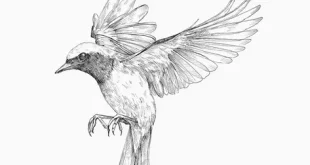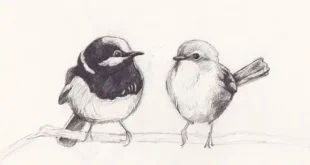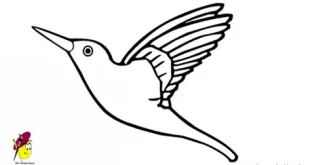The Majestic Turaco Birds: Nature’s Living Jewels
1. Introduction to Turaco Birds
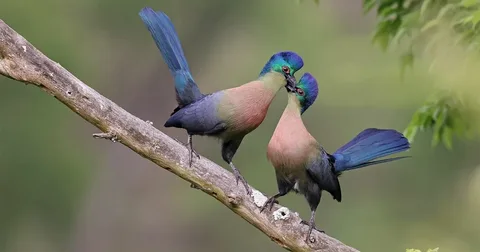
Turaco Birds are medium-sized, colorful birds found exclusively in Africa, where they inhabit forests, savannas, and riverine woodlands. There are 23 recognized species of Turacos, each displaying remarkable patterns and unique colors that set them apart from other bird families. Their name originates from the call they produce, which sounds like “turaco,” a soft yet rhythmic sound that resonates through the wild.
Unlike many birds whose colors are due to light refraction, Turacos possess real pigment-based hues, which means their feathers retain their color even after they fall off — a rarity in the bird kingdom.Turacos also play an important role in their ecosystems. By feeding on fruits, berries, and seeds, they act as seed dispersers, contributing to the regeneration of forests and maintaining biodiversity.
2. Physical Appearance and Unique Features
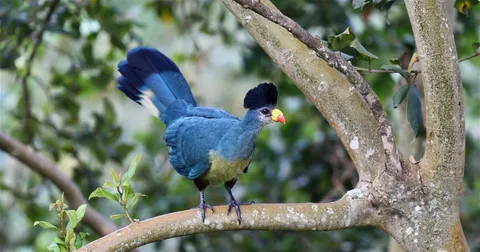
Depending on the species, their feathers may display shades of emerald green, crimson red, royal blue, purple, and bright yellow.
One of the most extraordinary characteristics of Turacos is their use of two rare copper-based pigments:
- Turacoverdin: Produces their lush green plumage.
- Turacin: Gives their wing feathers a distinctive crimson hue.
Their feathers often seem to glow under sunlight, adding to their reputation as “living jewels of the forest.”
Turacos also possess zygodactyl feet — two toes facing forward and two backward — which make them expert climbers. While they are capable of short bursts of flight, they prefer running and hopping among branches, using their agility to escape predators and search for food.
3. Habitat, Distribution, and Lifestyle
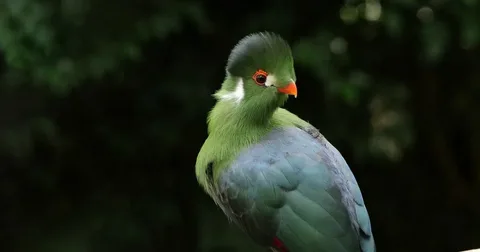
Turacos are endemic to Africa, with species distributed across various habitats depending on their adaptability. They are commonly found in:
- Dense tropical forests
- Woodlands and savannas
- Riverbanks and highland regions
Some species, like the Great Blue Turaco Bird thrive in humid rainforests, while others, such as the Go-Away Bird, prefer dry savannas. This adaptability explains their widespread presence across sub-Saharan Africa.
Turaco Bird are social birds, often seen moving in small family groups or flocks of up to 12 individuals. They communicate through distinct calls, some melodic and others loud and harsh, depending on the species. Their diet consists primarily of fruits, berries, leaves, and flowers, making them important contributors to seed dispersal and forest regeneration.
4. Behavioral Traits and Breeding Patterns
Turaco birds are known for their gentle and shy temperament. They prefer staying within the safety of foliage, rarely venturing into open spaces. Their reserved behavior and excellent natural concealment often make them difficult to detect in the wild, even with their vivid plumage.
When it comes to breeding, Turacos exhibit monogamous behavior; moreover, they form long-lasting pairs. During courtship, males often perform playful displays. For example, they engage in short flights, feather fluffing, and even feeding the female as a sign of bonding.
Their nests are usually small, loosely built platforms of sticks hidden within dense foliage. Both parents share responsibilities — incubating eggs and feeding the chicks after hatching. The chicks are born with underdeveloped feathers but grow quickly and begin climbing branches within a few weeks, relying on their zygodactyl feet before developing full flight capabilities.
Turacos also display territorial behavior, often defending their nesting areas from intruders. However, their confrontations are usually limited to loud calls and short chases rather than aggressive fights.
5. Importance, Conservation, and Cultural Significance
Turacos contribute significantly to preserving the harmony of ecosystems. As major consumers of fruits and berries, they act as key seed dispersers, ensuring the continued growth of trees and plants in their habitats. Their connection with the environment emphasizes the mutual dependence of animals and plant life.
Despite their ecological importance, some Turaco species face threats due to habitat destruction, deforestation, and hunting. Conservation organizations are working to protect forests and raise awareness about the significance of these birds to preserve their populations for future generations.
Their striking colors have inspired local art, folklore, and even jewelry.
Conclusion
Their vibrant presence in Africa’s forests not only enhances the region’s natural beauty but also underscores the need to protect and conserve their habitats.
By preserving Turacos, we also safeguard the delicate ecosystems they help sustain. These vibrant treasures highlight the abundance of biodiversity and underscore the value of living in harmony with nature.
 Birds Drawing Birds Drawing
Birds Drawing Birds Drawing

